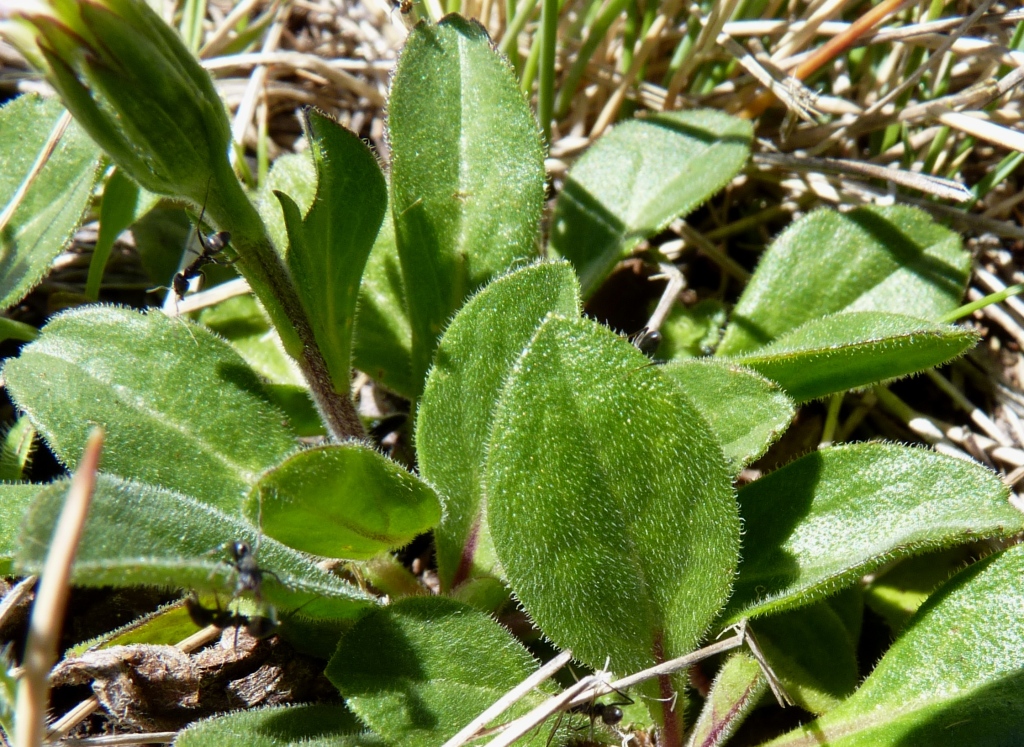Pappochroma bellidioides
(Hook.f.) G.L.Nesom Violet FleabaneShortly rhizomatous, sometimes colonial herb to 15(–30) cm high. Leaves rosetted, spathulate or obovate, with or without long petiole-like bases, 15–80 mm long, 5–15(–20) mm wide, usually crenate or shallowly dentate near apex, rarely entire, sparsely to densely hirsute with non-glandular hairs to 1 mm long, and a few sessile glands; apex obtuse. Peduncle unbranched, with narrowly obovate to linear bracts, elongating in fruit. Capitula turbinate; involucral bracts narrow-triangular, 8–13 mm long, lightly pubescent with mixed non-glandular and glandular hairs, ciliate toward apex; ray florets 1–3-seriate, ligules white to purplish, 4–5 mm long, more or less erect, exceeding involucre by c. 2 mm. Cypselas flattened, c. oblong, 5.5–8 mm long, very sparsely glandular; pappus bristles c. uniform, 5.5–9 mm long. Flowers Dec.–Feb.
NIS, HNF, VAlp. Moderately common in grassland, open heathland and grassy woodland communities in the alps and subalps, occupying drier sites than the largely co-extensive Pappochroma paludicola.
Pappochroma bellidioides has been frequently confused with P. pappochromum. Pappochroma pappochromum is endemic to Tasmania and has leaves that are glabrous (or are almost devoid of hairs), whereas P. bellidioides has leaves that are usually covered by short non-glandular hairs or have leaves that at least have numerous hairs along the midrib and margins with scattered hairs throughout the lamina.
 Spinning
Spinning
